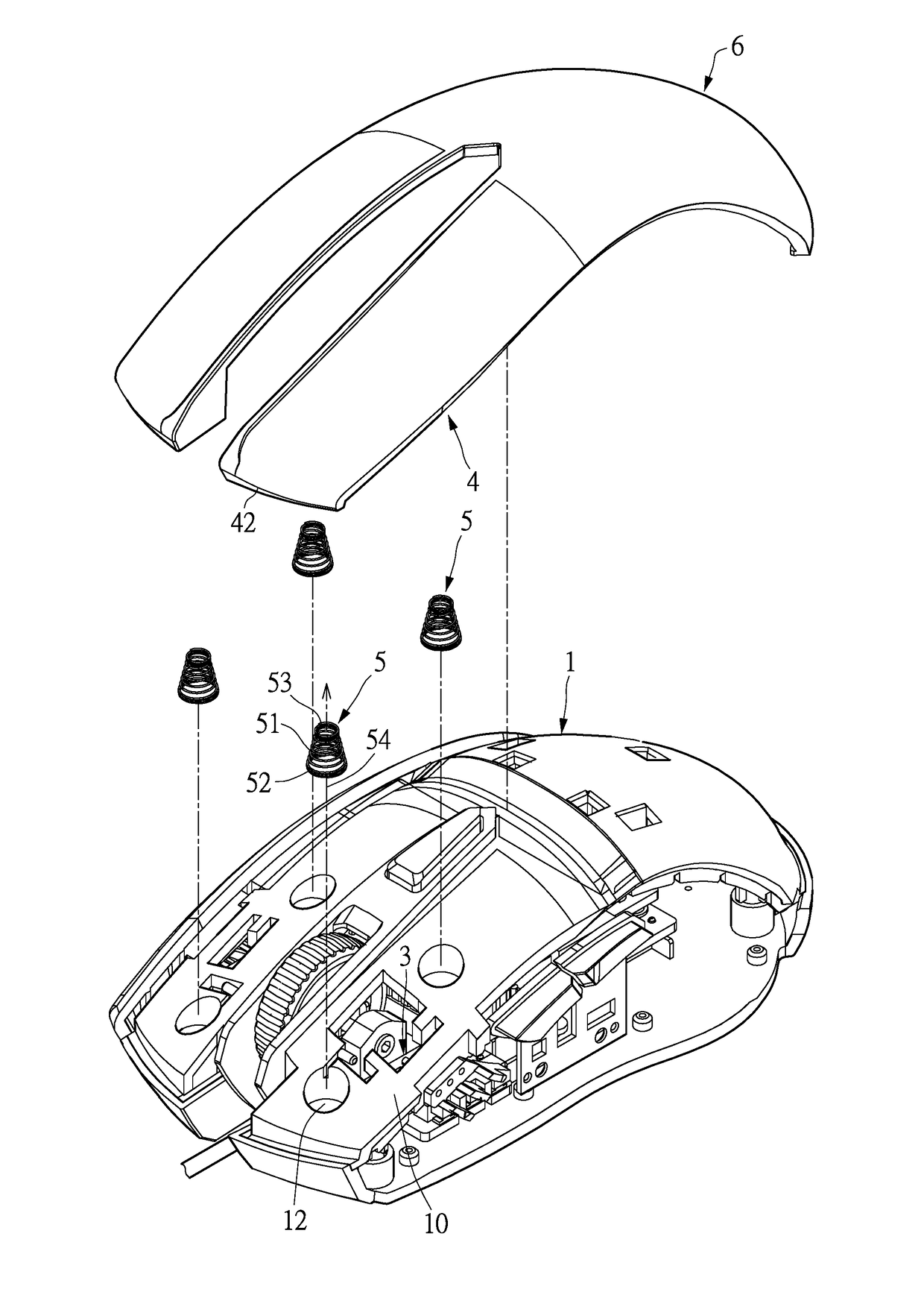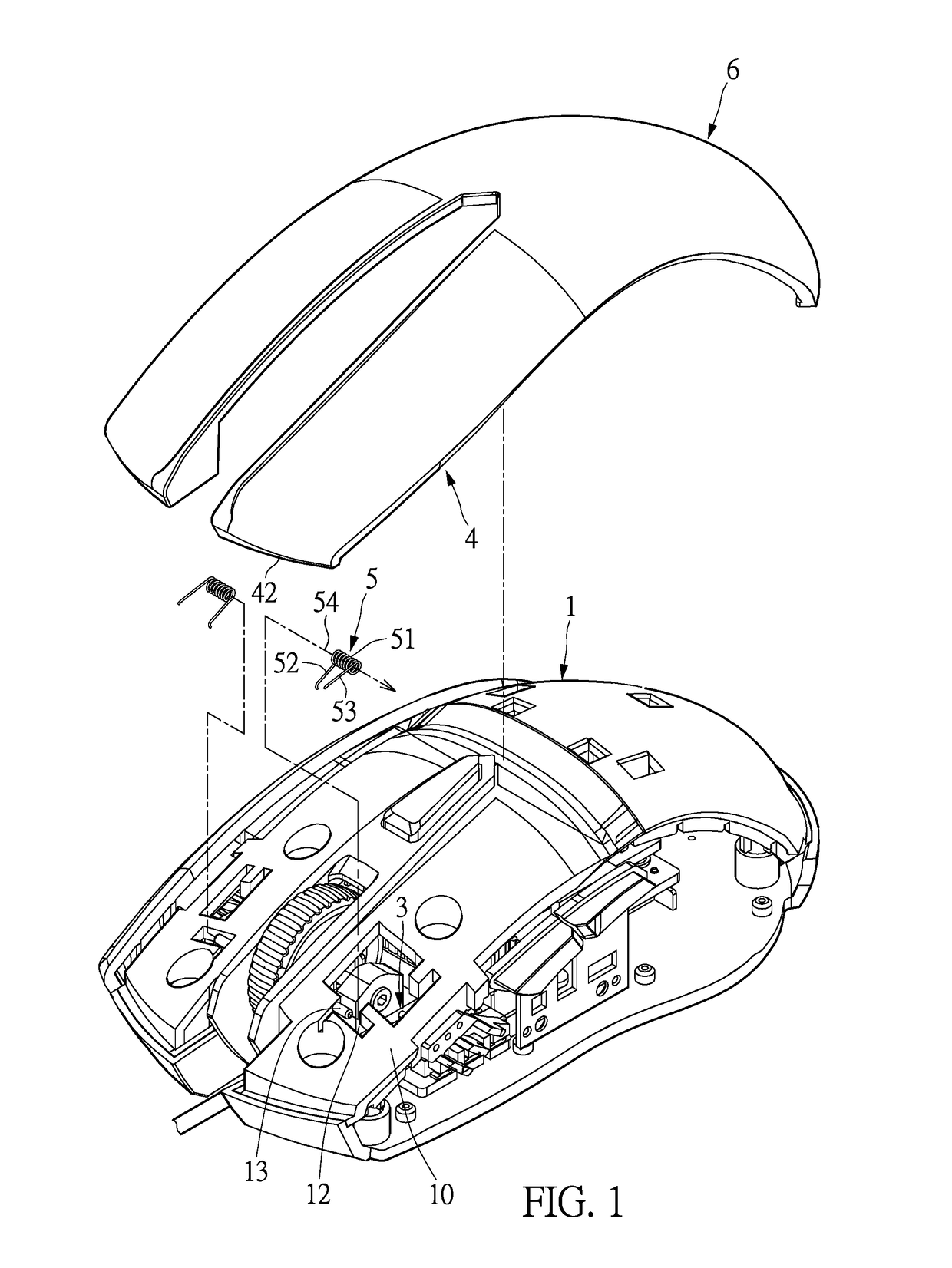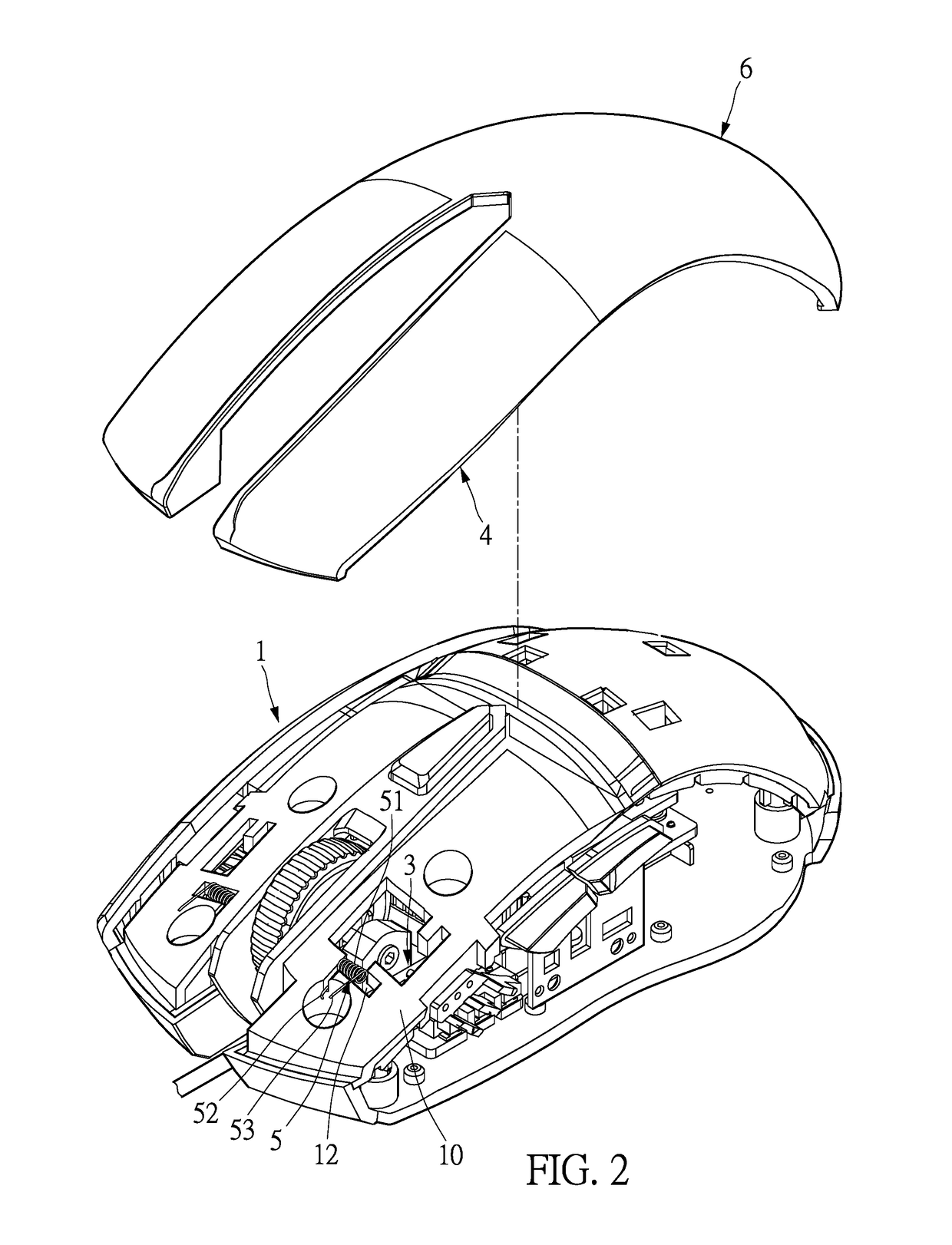Computer mouse capable of restraining rebound force
a computer mouse and rebound force technology, applied in computing, instruments, electric digital data processing, etc., can solve the problems of generating double-click events and buttons that cannot be clicked exactly, and achieve the effect of stably disposed
- Summary
- Abstract
- Description
- Claims
- Application Information
AI Technical Summary
Benefits of technology
Problems solved by technology
Method used
Image
Examples
first embodiment
[0021]Reference is made to FIG. 1 to FIG. 4. The present disclosure provides a computer mouse having a button and being capable of restraining rebound force, which includes a main body 1, a circuit board 2, a switch module 3, a button 4 and an elastic element 5.
[0022]The main body 1 has a top board 10, and the top board 10 is disposed on a top of the main body 1. The main body 1 is disposed with a receiving space 11 therein. The circuit board 2 and the switch module 3 are installed in the receiving space 11. The switch module 3 is disposed on the circuit board 2. The switch module 3 is electrically connected to the circuit board 2. The receiving space 11 is an inner space of the main body 1, which is equipped with necessary elements such as an optical reading module and a roller and so on for operating a computer mouse. These elements are not described here.
[0023]The button 4 is a long-shaped board and is movably disposed on the top board 10 of the main body 1 in an up-and-down mann...
second embodiment
[0031]Reference is made to FIG. 5 to FIG. 8. The main difference between this embodiment and the above embodiment is that, the elastic elements 5 of this embodiment are compression springs. Each elastic element 5 has a main part 51 which can be a spiral structure. The elastic element 5 has a first end 52 and a second end 53. The first end 52 and the second end 53 are respectively formed at two ends of the main part 51. The first end 52 and the second end 53 are ring-shaped. A diameter of the first end 52 is larger than that of the second end 53, so that the main part 51 is a tapered screw. Each button 4 can be equipped with two elastic elements 5, and the two elastic elements 5 are respectively disposed at a front position of the switch module 3 and a rear position of the switch module 3. The elastic element 5 is disposed between the top board 10 of the main body 1 and the button 4. At least one elastic element 5 is close to the free end 42 of the button 4, and the elastic element 5...
third embodiment
[0033]Reference is made to FIG. 9. The main difference between this embodiment and the above embodiment is that, the elastic elements 5 of this embodiment are blade springs. Each elastic element 5 has a main part 51, and the main part 51 can be in a blade shape. The elastic element 5 has a first end 52 and a second end 53. The first end 52 and the second end 53 are formed on the main part 51. Each button 4 is correspondingly equipped with an elastic element 5. The elastic element 5 is close to the free end 42 of the button 4. The elastic element 5 is disposed between the top board 10 of the main body 1 and the button 4. The elastic element 5 contacts the inner side of the button 4, so as to provide the button 4 with a recovery force of moving upwards.
[0034]In this embodiment, the elastic elements 5 are respectively received in the accommodating slots 12 which are formed on the top board 10 of the main body 1. The accommodating slot 12 can be square recess. The first end 52 of the el...
PUM
 Login to View More
Login to View More Abstract
Description
Claims
Application Information
 Login to View More
Login to View More - R&D
- Intellectual Property
- Life Sciences
- Materials
- Tech Scout
- Unparalleled Data Quality
- Higher Quality Content
- 60% Fewer Hallucinations
Browse by: Latest US Patents, China's latest patents, Technical Efficacy Thesaurus, Application Domain, Technology Topic, Popular Technical Reports.
© 2025 PatSnap. All rights reserved.Legal|Privacy policy|Modern Slavery Act Transparency Statement|Sitemap|About US| Contact US: help@patsnap.com



